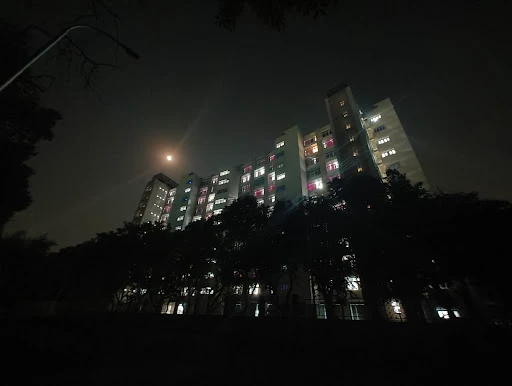Moonlight Whispers: Finding Peace Beneath the Night Sky
There’s something undeniably magical about a moonlit night—a kind of soft serenity that washes over everything it touches. Long before artificial lights and glowing screens, the beauty of the moon guided travellers, inspired poets, and offered silent companionship to those who wandered under its gaze. Even now, in a world buzzing with distractions, a quiet walk under moonlight serenity offers peace we didn’t know we needed.
In this blog, we’ll explore the emotional and visual wonder of a full moon night, the power of moonlight photography, and how moonlight impacts our memory, creativity, and state of mind.
---
The First Glimpse: When the Moon Rises
As twilight gives way to darkness, the moon slowly ascends—not with fanfare, but with a quiet presence that commands attention. It starts as a glimmer behind the clouds and soon becomes a glowing orb suspended in the vast evening sky. Whether it’s a slim crescent or a blazing full moon, its appearance is always moving.
Recently, I stood in the middle of a modern courtyard—its towering buildings casting long shadows—and watched as the moon rose between them. In that moment, it wasn’t just nature’s quiet moment, it was a scene transformed. The dull cement structures took on a silver sheen, becoming something cinematic and contemplative. The tranquility of night enveloped me.
---
Architecture Under Moonlight: A New Kind of Beauty
Moonlight transforms everything it touches. Unlike the sharp clarity of sunlight, lunar beauty lies in the way it softens, deepens, and reshapes our view of the world. Tall towers become guardians of silence. Sidewalks turn into glowing trails. A rooftop looks like the deck of a spaceship sailing through the cosmos.
In the photograph I captured, the moon wasn’t just a celestial object—it was a light source that shaped emotion. The architecture under moonlight became more than lines and angles. It took on a spiritual meaning, as though the moon had touched the structure with grace.
Moonlight photography thrives in this mystery. It’s not about technical perfection—it’s about feeling. About capturing that one moment where shadow and light tell a deeper story.
---
Walking Under the Moon: A Simple Joy
If you’ve never taken the time to walk under the moon, you’re missing out on one of life’s most gentle pleasures. Everything feels slower, softer, more forgiving. Whether in nature or on a quiet city street, the moon’s silver glow makes the ordinary feel enchanted.
It’s a free form of meditation—a kind of mindful night walk. The air is cooler, the surroundings quieter. You hear your own footsteps, your breath, perhaps a rustle of leaves or the distant call of a night bird. The world feels more alive—and so do you.
Many people describe this feeling as moonlight serenity. It’s why countless cultures have associated the moon with clarity, rest, and inner healing.
---
The Emotional Power of Moonlight
What makes a moonlit night so emotionally powerful?
It might be the stillness. Or the contrast between light and shadow. Or the way the moon seems to shine just for you. Unlike the sun, which demands attention, the moon offers quiet companionship. It’s a gentle witness to your thoughts, your joys, and your sorrows.
Moonlight affects our emotions in subtle but profound ways. It often triggers nostalgia, reflection, and creativity. It’s no wonder that moonlight is a recurring theme in poetry and music across the world. From Shakespeare’s romantic lines to Bollywood’s midnight serenades, the moon is an eternal muse.
---
Moonlight and Memory: Why Some Nights Stay With Us
There are nights we forget—and nights that stay etched in our hearts forever. Often, these are moonlit nights, remembered not for events, but for their feelings. The moon acts as a memory anchor, grounding us in a specific emotional moment.
Perhaps you remember a night where the moonlight fell on your face, or a moment of deep conversation on a moon-drenched terrace. Maybe it was a long walk where the moon was your only company. These memories live not in words, but in light and silence.
Moonlight is not just seen—it is felt.
---
Capturing the Moon: Photography Tips and Reflections
Taking a perfect moonlight photograph is no small feat, but the reward is worth the effort. To capture that silvery calm and the dramatic play of shadows, here are some key tips:
- Use a tripod for stability.
- Include foreground objects like buildings or trees to give context.
- Experiment with exposure; the moon is brighter than you think.
- Use manual focus to avoid blur.
- Shoot in RAW format to enhance your post-processing control.
Remember, the goal of moonlight photography is not just clarity—it’s emotion. Let your frame tell a story. Let the shadows whisper.
The photo I took that night—of a courtyard basked in lunar glow—was less about symmetry and more about feeling. The silver hues, the still windows, and the glowing orb above—they came together in perfect harmony.
---
The Spiritual Meaning of Moonlight
In many cultures, moonlight symbolises clarity, healing, and divine timing. It’s believed to cleanse energy, enhance intuition, and open the heart to deeper understanding. Whether you believe in spiritual practices or not, there’s no denying the emotional release that often comes during a full moon night.
Many people practice moonlight meditation, write in journals, or simply sit in silence to receive the night’s energy. It’s a time to reflect, let go, and reset.
The spiritual meaning of moonlight is deeply rooted in history. Ancient tribes celebrated moon cycles. Modern-day wellness routines include moon rituals. The full moon, especially, is seen as a peak—of energy, emotions, and insight.
---
A Universal Companion: The Moon Across Cultures
The moon is perhaps the most universal experience of nature. It shines above cities, mountains, deserts, and oceans. Whether you’re in Tokyo or Tanzania, Paris or Patna, the same moon watches over you.
In Indian culture, festivals like Karva Chauth, Sharad Purnima, and Chandni Raat are deeply tied to moonlight. In Chinese traditions, the Mid-Autumn Festival celebrates unity and gratitude under the moon. In Islam, the lunar calendar guides holy months like Ramadan.
This shared symbolism makes the moon more than a planet’s satellite—it becomes a symbol of shared humanity, of rhythm, and of eternity.
---
Moonlight as a Mindful Practice
In a world of notifications, the moon asks for none. It doesn’t vibrate, flash, or update. It simply is. Observing the moon can become a beautiful mindfulness practice. You don’t need apps or tools. Just your breath, your presence, and the sky.
Try this:
Step outside during the next full moon night.
Leave your phone behind.
Walk or sit quietly.
Let your thoughts come and go.
Simply look at the moon and feel.
You may notice stress melting, creativity rising, or a calm you didn’t know you were craving. That’s the power of moonlight.
---
Conclusion: When the Moon Beckons
A moonlit night doesn’t shout. It doesn’t seek to impress. It simply exists—quiet, eternal, and open to all.
In the silence of that night, in the hush of shadows and the gentle light, lies a gift: a return to simplicity. A moment of peace. A window to the soul.
The next time you see the moon shining above you, take it as a sign—to pause, reflect, and reconnect with the rhythm of the universe. The beauty of the moon is not just in its glow, but in the way it slows us down and lights us up inside.
---
Have you ever experienced something unforgettable under the moonlight? Share your story or photo in the comments. Let’s celebrate the quiet beauty of the night—together.
---


















0 Comments
If you have any doubt let me know.